The variation of velocity of a particle with time moving along a straight line is illustrated in the following figure. The distance travelled by the particle in four seconds is.
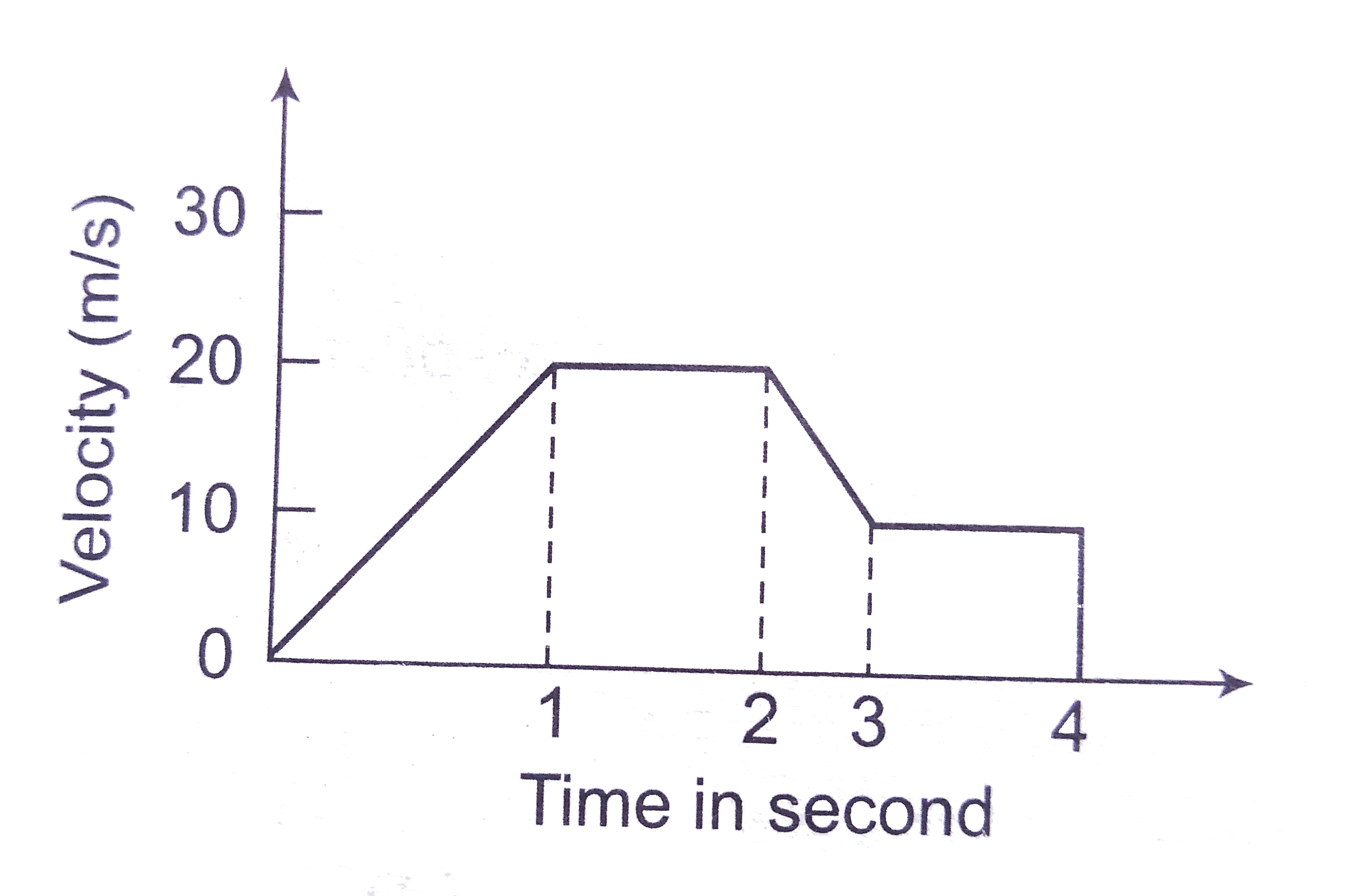
60 m
55 m
25 m
30 m
The correct Answer is:B
Distance = Area under υ−t graph = A1+A2+A3+A4
Displacement = positive area - negative area
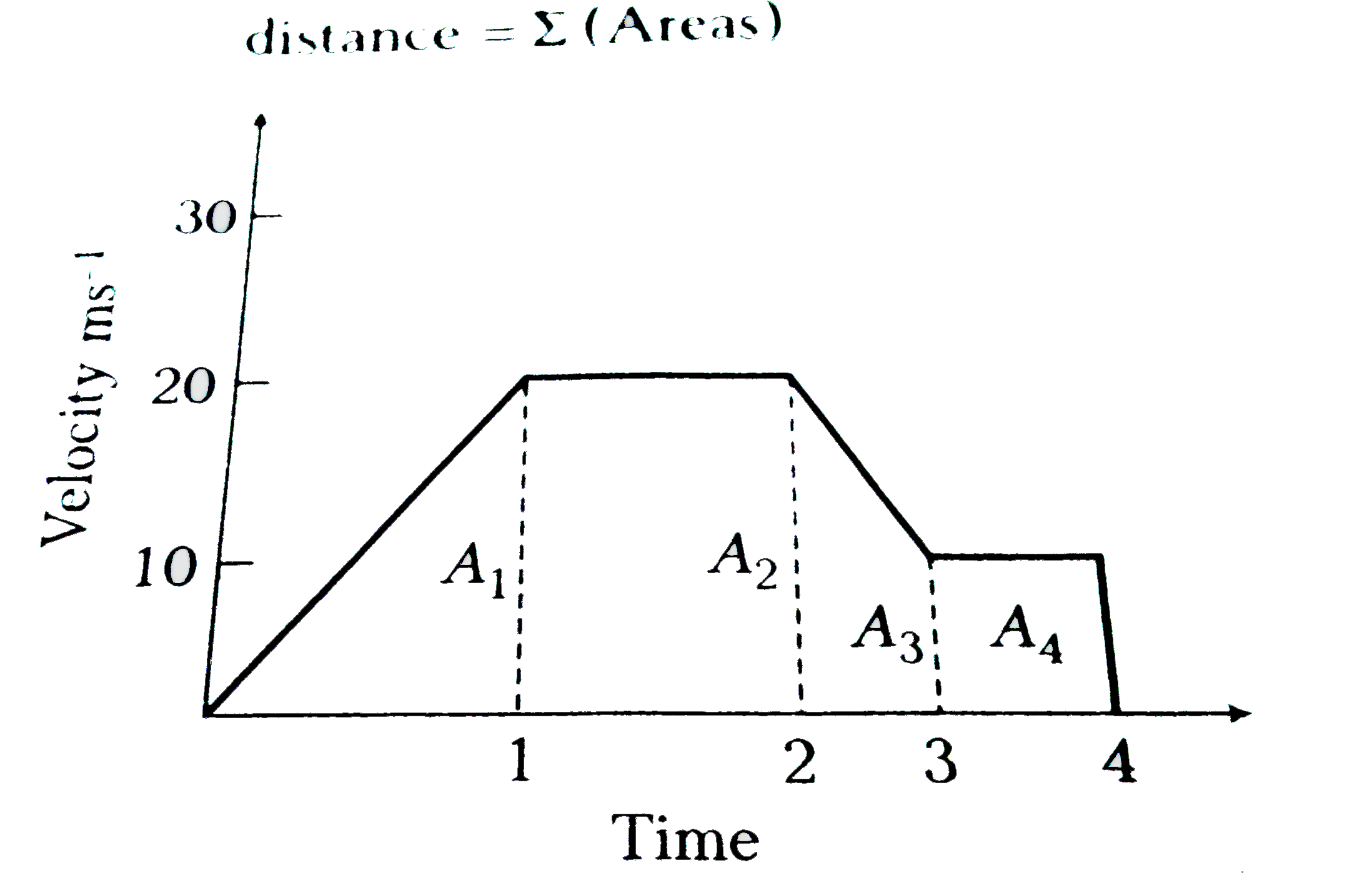
=12×1×20+(20×1)+12(20+10)×1+(10×1)
=10+20+15+10=55m
Topper's Solved these Questions
- MOTION IN A PLANEBOOK - DC PANDEYCHAPTER - MOTION IN A PLANEEXERCISE - Check point 3.7
15 Videos
- MOTION IN A PLANEBOOK - DC PANDEYCHAPTER - MOTION IN A PLANEEXERCISE - (A) Taking it together
75 Videos
- MOTION IN A PLANEBOOK - DC PANDEYCHAPTER - MOTION IN A PLANEEXERCISE - Check point 3.5
25 Videos
- MOTIONBOOK - DC PANDEYCHAPTER - MOTIONEXERCISE - Medical entrances gallery
19 Videos
- PROJECTILE MOTIONBOOK - DC PANDEYCHAPTER - PROJECTILE MOTIONEXERCISE - Level - 2 Subjective
10 Videos
Similar Questions
The variation of velocity of a particle moving along a straight line is as shown in the figure given below. The distance travelled by the particle in 5 s is
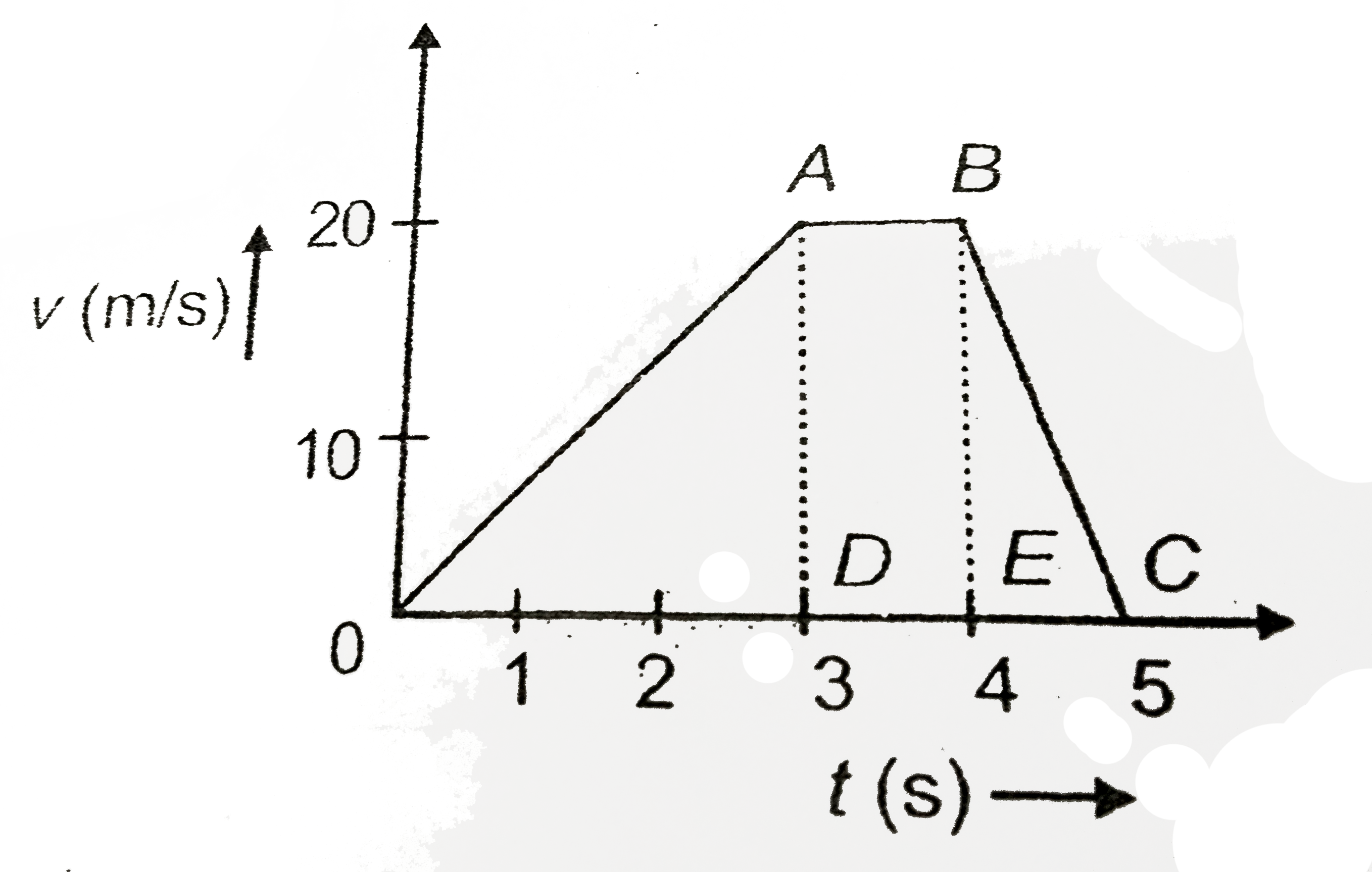
View SolutionThe variation of velocity of particle moving along a straight line is shown in the figure. The distance travelled by the particle in 4th second is
View Solution
Knowledge Check
The variation ofvelocity ofa particle moving along a straight line is illustrated in the following figure-1.122. The distance covered by the particle in 4 seconds is :
 A60 mB25 mC55 mD30 m
A60 mB25 mC55 mD30 mThe variation of velocity of a particle moving along a straight line is shown in . is
 .A37.5kmB32.5mC35.0mDNone of these
.A37.5kmB32.5mC35.0mDNone of theseA particle is moving along a straight line.
AIf the acceleration of the particle is more than that of another object, the particle is moving faster.BIf the acceleration is positive, the speed must be increasing.CIf the acceleration and the velocity have the same sign, the speed must be increasing.DIf the acceleration is zero, the velocity is constant but the speed may be changing.
The variation of velocity of particle moving along a straight line is shown in the figure. The distance travelled by the particle in 4th second is?
View SolutionThe variation of velocity of a particle moving along straight line is shown in the figure. The distance travelled by the particle in 4 s is
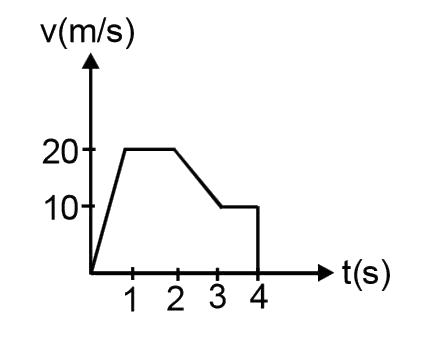
View SolutionVelocity of a particle moving along a straight line at any time 't' is give by V=cos(π3t) . Then the distance travelled by the particle in the first two seconds is :
View SolutionIf a particle is moving along straight line with increasing speed, then
View SolutionThe velocity time plot for a particle moving on straight line is shown in the figure.
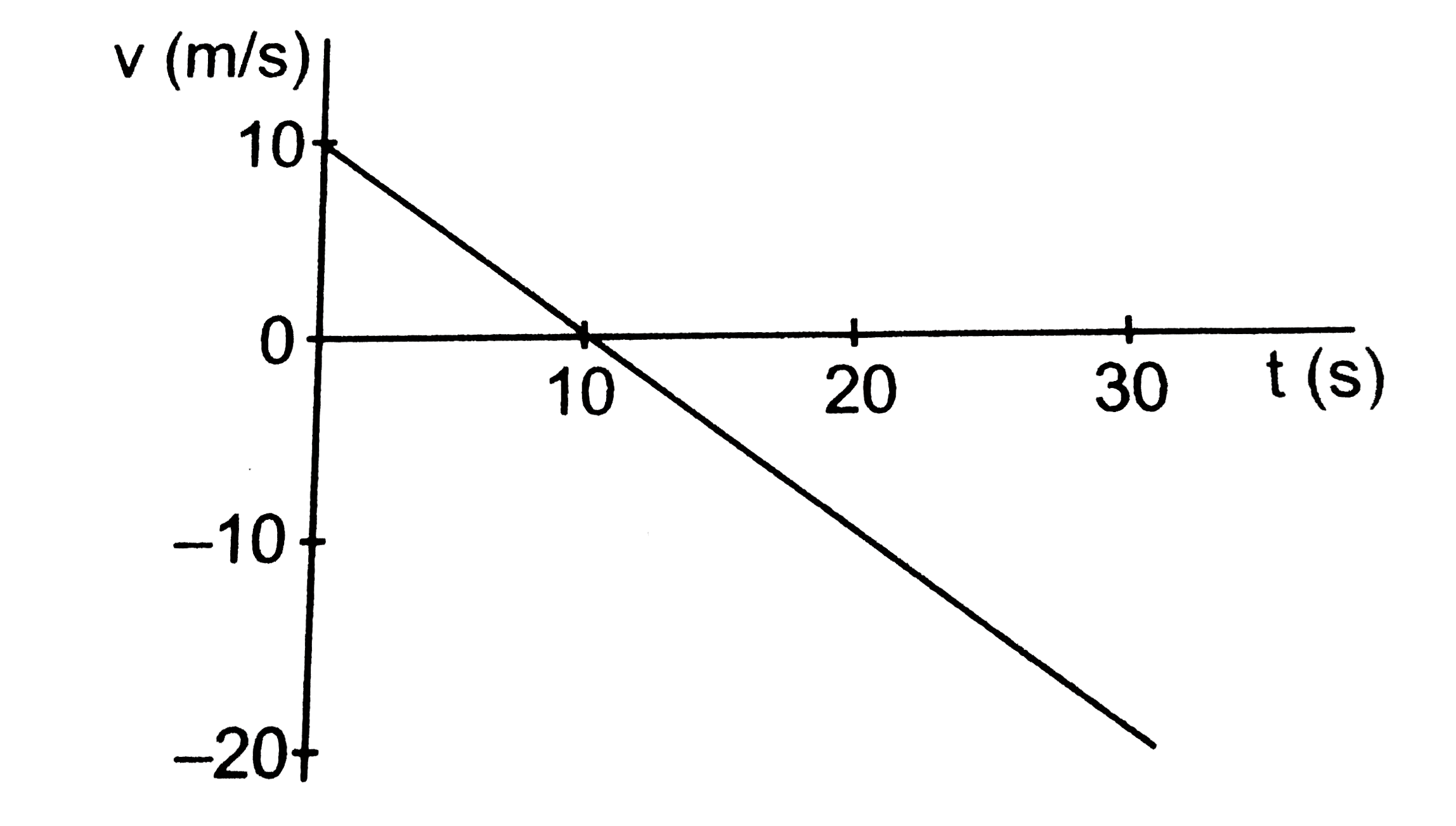
View Solution
